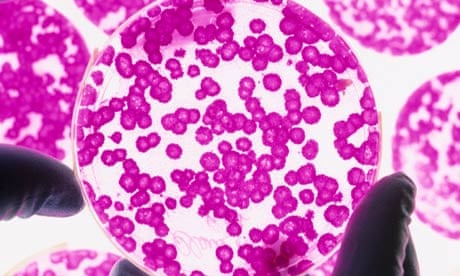A talented British doctor committed research fraud in the United States by applying for two grants on the basis of fraudulent results from stem cell trials he had not carried out, the US authorities have ruled.
The ophthalmologist Peter Francis has resigned from Oregon Health and Science University's Casey Eye Institute, where he was associate professor and director of the Translational Clinical Trials Centre, according to the British Medical Journal.
The US Office of Research Integrity (ORI) was called in after Francis made two grant applications for federal funds to the National Eye Institute. He claimed he had injected retinal pigment epithelial cells obtained from rhesus monkey embryonic cells into a kind of rats that develops retinal degeneration.
Francis said the experiments had been successful. The rats showed "enhanced photoreceptor preservation and no adverse effects" compared to untreated animals. In truth, the experiments were still on the drawing board.
Francis was recruited by the university in Oregon as a rising star. He previously worked in St Thomas' hospital in London. In 2002, he won the national research prize for best up-and-coming medical researcher in the UK.
He was awarded several prestigious retina fellowships in the UK and in the US, according to the US Foundation Fighting Blindness, which helped fund his work. In January 2006, he was offered and accepted a permanent job at the Casey Eye Institute. He was given permanent US residency on the basis of US national interest in attracting high-class clinical researchers.
The ORI said Francis had agreed a voluntary settlement under which any research he did for the next two years would be supervised. Any institution employing him would have to certify that any research results were based on actual experiments.
In a statement, the university said: "OHSU [Oregon Health and Science University] takes research integrity matters very seriously. When questions were raised about one of Dr Francis's research projects, he was immediately placed on leave. An investigation took place by our scientific integrity committee and the results were reported to the Office of Research Integrity of the National Institutes of Health. At the conclusion of the investigation, Dr Francis decided to leave the university.
"The importance of the ongoing research previously conducted in the Francis lab at OHSU has been recognised by the National Institutes of Health, which approved the appointment of new principal investigators at OHSU to continue the work.
"OHSU has several mechanisms in place to rapidly respond when concerns about research are raised. These measures include methods for reporting concerns by staff and colleagues and continuous oversight by our research integrity office. This is a case where those systems worked well and we were able to respond appropriately."
